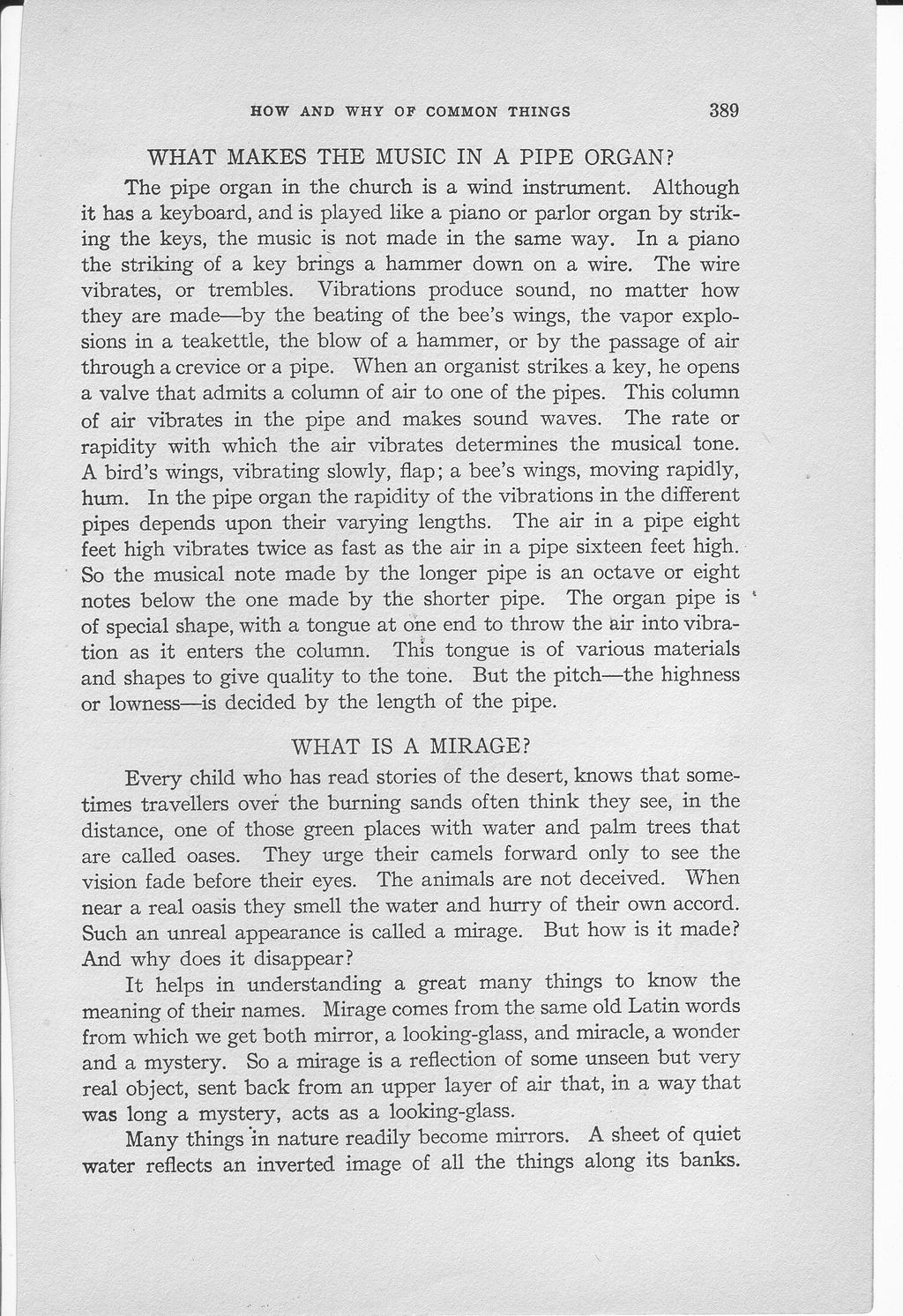WHAT MAKES THE MUSIC IN A PIPE ORGAN?
The pipe organ in the church is a wind instrument. Although it has a keyboard, and is played like a piano or parlor organ by striking the keys, the music is not made in the same way. In a piano the striking of a key brings a hammer down on a wire. The wire vibrates, or trembles. Vibrations produce sound, no matter how they are made—by the beating of the bee's wings, the vapor explosions in a teakettle, the blow of a hammer, or by the passage of air through a crevice or a pipe. When an organist strikes a key, he opens a valve that admits a column of air to one of the pipes. This column of air vibrates in the pipe and makes sound waves. The rate or rapidity with which the air vibrates determines the musical tone. A bird’s wings, vibrating slowly, flap; a bee’s wings, moving rapidly, hum. In the pipe organ the rapidity of the vibrations in the different pipes depends upon their varying lengths. The air in a pipe eight feet high vibrates twice as fast as the air in a pipe sixteen feet high. So the musical note made by the longer pipe is an octave or eight notes below the one made by the shorter pipe. The organ pipe is of special shape, with a tongue at one end to throw the air into vibration as it enters the column. This tongue is of various materials and shapes to give quality to the tone. But the pitch—the highness or lowness—is decided by the length of the pipe.
WHAT IS A MIRAGE?
Every child who has read stories of the desert, knows that sometimes travellers over the burning sands often think they see, in the distance, one of those green places with water and palm trees that are called oases. They urge their camels forward only to see the vision fade before their eyes. The animals are not deceived. When near a real oasis they smell the water and hurry of their own accord. Such an unreal appearance is called a mirage. But how is it made? And why does it disappear?
It helps in understanding a great many things to know the meaning of their names. Mirage comes from the same old Latin words from which we get both mirror, a looking-glass, and miracle, a wonder and a mystery. So a mirage is a reflection of some unseen but very real object, sent back from an upper layer of air that, in a way that was long a mystery, acts as a looking-glass.
Many things in nature readily become mirrors. A sheet of quiet water reflects an inverted image of all the things along its banks.
